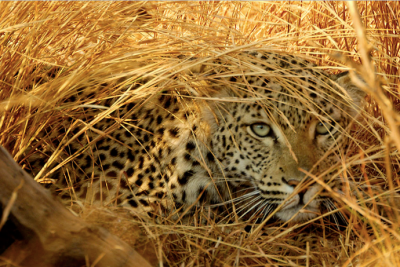|

For now, best hide
A few days ago, the South African Department of Environmental Affairs decided to suspend leopard trophy hunting in South Africa for 2016. I have reported on this decision and the underlying reasons that actually might not have much to do with leopard conservation.
But let’s look at leopards from a different angle. There are two very important fact to realize about leopards:
1. Nobody knows how many leopards there are in Africa, but they remain one of the most popular species on the trophy hunting menu.
2. Leopards are listed on CITES Appendix I and the European Trade Regulation Annex A. That means leopards should be afforded the highest level of protection against commercial offtake for the international trade. This listing largely came about because of the massive trade in leopard skins for the fashion industry.
Being listed on Annex A in Europe means that ANY commercial use of the species has to show actual conservation benefits for such use. So trophy hunting, for example, has to show positive benefits for the species. The EU wildlife trade regulations say so in no uncertain language.
So let’s have a look at how well (or not) the EU is enforcing this requirement?
CITES records during the five years 2009-2013 show the following numbers of leopard skins and trophies imported to just these five EU member states:
France: 491
Spain: 320
Germany: 318
Italy: 117
Denmark: 111
For a total of 1,357 leopard products imported by just five EU states over five years.
I’ll say it again – nobody knows how many leopards are left in Africa. NO real numbers are out there, meaning that there is NO way leopard hunting can in any way be called “sustainable”. Or even come CLOSE to meeting the CITES Appendix I and the EU Wildlife Trade Annex A requirements that international trade should show clear benefits to the conservation of the species.
Leopard hunting is easy – put out baits in trees and the leopards will come.
Yet leopard hunting continues to be practiced in Africa and leopard trophies happily shipped across the world. This is a complete nonsense, all the regulatory mechanisms to stop the madness are already in place. All that the complete cessation of the trade in leopards requires is a bit of will by EU authorities for example. We know there are many concerned individuals out there who are dedicated to leopard conservation but who have not received sufficient support to translate their concerns into needed action.
Picture credit: Matlabas.co.za
|




